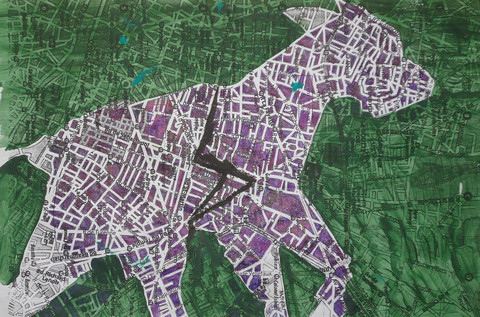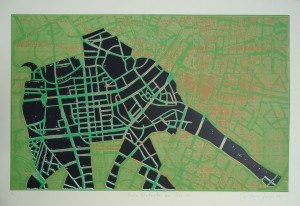
Caballito de Mar Dublin
About:
Bebe Elefante en Berlin.
Miranda (1969) belongs to a generation (the one of the 1990s) somewhat pressed by the urgency to speak out. They were the protagonists of a conceptual rebellion which aimed to cover the sense of abandonment caused by the mass exodus of previous generations. Certainly, this contingency generated substantial and transcendental interventions in Cuban visual arts. However, I also believe that perhaps it deprived it of a more relaxed and less toxic poetic. Ibrahim’s work is among the few that reached a balance between prevailing circumstances and the commitment of not turning his back on his own concerns, since he has confessed not feeling imprisoned by what he considers the narrow territory of a generation. (says Ricardo Alberto Perez)
 Mapas, 2012.
Mapas, 2012.
A painter, professor, and engraver, Ibrahim Miranda frequently uses maps of Cuba as the basis for his work. Reinterpreting his vision, Miranda expands the island borders and physical limits to make his country universally accessible through art. The poetry and songs of Cuba provide literary and philosophical ideas, deepening the meaning and impact of his prints and paintings. During his residency, Miranda will develop mapaglifos, incorporating maps of cities in the United States with imaginative animals. The pictorial urban bestiaries will define spaces within a large city as well as identify tiny utopias in his shapes. Miranda attended the Instituto Superior de Arte in Havana and has extensively exhibited his work nationally and internationally including the Museum of Modern Art in New York and the National Gallery of Art in Washington, DC.
 A Dog in Paris.
A Dog in Paris.
Cabalo en Madrid, 2007.
Ibrahim Miranda was important in the rebirth of printmaking in Cuba of the early 1990s which, according to the critic David Mateo, had the character of a vindication after years of neglect of this creative expression that previously had a long tradition in our visual arts.


